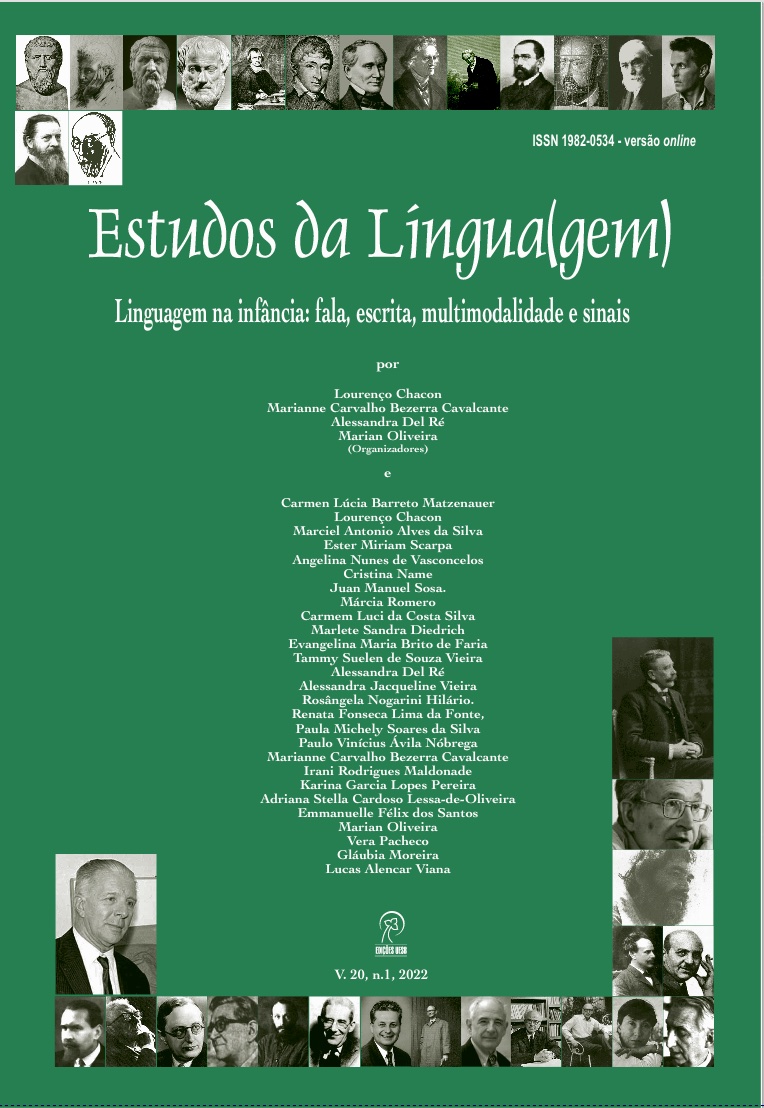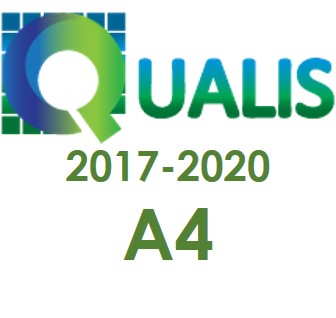Integration between language acquisition and phonological theory: evidence from three views of segment as a unit of phonology
DOI:
https://doi.org/10.22481/el.v20i1.12062Keywords:
Phonology Acquisition; Phonological Theories; Segments, Syllables and Features.Abstract
Considering that it is an attribute of linguistic theories to explain and formalize phonological grammars of languages and assuming that children’s stages of phonological development imply grammar construction, this paper aims to discuss the relevance of linking Language Acquisition and Phonological Theory. Pertinence of interaction between both fields of knowledge is evidenced by the view of the segment as a unit of phonology, taken from three perspectives: the segment as a co-occurrence of features, as a syllabic constituent and as a member of a natural class. With empirical data on Brazilian children’s process of Phonology acquisition, results not only expose the contribution of theories to the unveiling of facts of phonological development but also point out the relevance of acquisition phenomena to support the proposition of theoretical assumptions.
Downloads
References
CHOMSKY, N; HALLE, M. The sound pattern of English. New York: Harper and Row, 1968.
CLEMENTS, G. N. The role of the sonority cycle in core syllabification. In: KINGSTON, J.; BECKMAN, M. (eds.). Papers in Laboratory Phonology 1: between the Grammar and Physics of Speech. New York: CUP, 1990.
CLEMENTS, G. N.; HUME. E. The internal organization of speech sounds. In: GOLDSMITH, J. A. (ed). The handbook of phonological theory. Cambridge: Blackwell Publishers,1995.
MATZENAUER-HERNANDORENA, C. L. B. Relações implicacionais na aquisição da fonologia. Letras de Hoje, v.31, p.67-76, 1996.
MATZENAUER, C. L. B. A arquitetura da gramática fonológica: mais uma observação sobre traços e classes de segmentos. In: Linguística Formal I. Florianópolis: UFSC, de 16/5 a 18/05, 2018.
MATZENAUER, C. L. B. A gramática fonológica na aquisição da linguagem. Fórum Linguístico, v. 16, p. 3769-3789, 2019.
MATZENAUER, C. L. B. Traços e classes de segmentos na arquitetura da gramática fonológica. Fórum Linguístico, v. 17, p. 4612-4635, 2020.
NEVES, M. H. de M. Ensino de língua e vivência de linguagem. São Paulo: Contexto, 2010.
SELKIRK, E. On the major class features and syllable theory. In: ARONOFF, M.; OEHRLE, R. (eds.). Language and sound structure. Cambridge, MA: MIT Press, 1984.
SILVA. A. H. P. Para a descrição fonético-acústica das líquidas no português brasileiro: dados de um informante paulistano. Dissertação (mestrado em Linguística) - Programa de Pós-Graduação em Linguística do Instituto de Estudos da Linguagem, UNICAMP, Campinas, 1996.
SILVA, A. H. P. As fronteiras entre Fonética e Fonologia e a alofonia dos róticos iniciais em PB: dados de dois informantes do sul do país. 2002. Tese (Doutorado em Linguística) - Programa de Pós-Graduação em Linguística do Instituto de Estudos da Linguagem, UNICAMP, Campinas, 2002.
VIHMAN, M. M. Phonological development: the origins of language in the child. Cambridge: Blackwell, 1996.
Downloads
Published
How to Cite
Issue
Section
License

This work is licensed under a Creative Commons Attribution 4.0 International License.

Estudos da Língua(gem) is licensed under a Creative Commons Attribution 4.0 International License.
Authors who publish in the journal Estudos da Língua (gem) agree with the following terms:
The journal Estudos de Língua(gem) maintains the copyrights of the contributions published. These rights include the publication of the contribution and make its content available for free through the portal.







